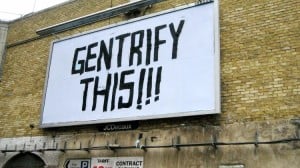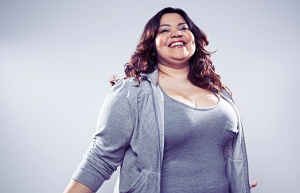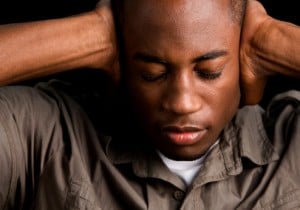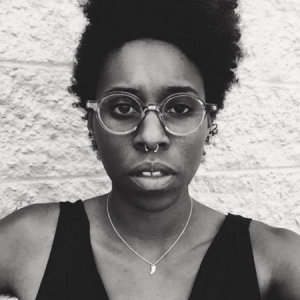
Source: Planet Ivy
When I was growing up in East New York, Brooklyn in the early 90s, most residents were Black or Latinx. Today, the demographics are still about the same, and very little has changed about the neighborhood.
I distinctly remember noticing that there were no white people that lived near me and that the neighborhoods that had a large percentage of white residents were simply better: They had better schools, nicer streets, more businesses, less crime, and no visible drug use.
It was everything I wanted my neighborhood to be.
As ashamed as I am to admit this now, I assumed that the only way neighborhoods could be bettered is by having white residents, so I hoped that my neighborhood would become like Williamsburg, Brooklyn. At the time, Williamsburg was rapidly changing, and what used to be dirty streets and run-down businesses were now tree-lined blocks and shiny Starbucks.
What I failed to understand then was that the gentrification of neighborhoods might make the space look better, but my family would never be able to afford the price of living there.
Although my childhood neighborhood is still far from gentrification due to its distance from New York City and history of gang violence, drug use, and poverty, things seem to be changing, as this real estate listing demonstrates by calling East New York “the new frontier.”
Gentrification is new-wave colonialism, and it has economic, societal, and public health repercussions for poor communities of color.
Many times when wealthy people move into a low-income neighborhood, they truly want to help. Oftentimes, they even start community programs and become leaders in the community, often through beautification projects. And while I get why this seems to be good at first glance, it really isn’t.
When neighborhoods are gentrified, those moving in are looking for cheap rent and the ability to make a better life for themselves.
And while wealthier people may feel entitled to buy or rent wherever they wish (as is indeed their right), they must also understand the consequences of their actions.
As our neighborhoods become “up-and-coming areas” that “evoke images of burned-out buildings, riots, and poverty,” the people that lived there through the poverty and disrepair deserve to stay in their homes and have a community that supports their needs.
We need to understand that gentrification isn’t about beautifying neighborhoods and making them safer. It is the systematic displacement of people of color from their homes.
Gentrification hurts communities of color, and these are some of the ways how.
1. As wealthier people move into poor neighborhoods, landlords raise their rents to cash in from the wealth of the new influx of residents.
As this study states, the median rent prices in New York City rose 75% since 2001. This same trend can be seen in other neighborhoods that have currently become gentrified, like Oakland, California.
It’s common to see landlords bully low-income tenants into moving out by not maintaining apartments or not renewing their lease, forcing residents to move out.
I’ve seen this happen to many of my relatives that moved to New York City in the early 70s and settled in the Lower East Side and Soho neighborhoods of lower Manhattan.
While these areas are now the first choice of home for celebrities and ritzy events like the TriBeCa Film Festival, they were previously filled with tenement buildings and low-income housing.
One of my aunts who still lives in what is now the very trendy Soho pays for all repairs and upgrades in her apartment, as the building owners refuse to do so in an effort to bully her into leaving and renting her apartment at a much higher cost.
Yes, it’s illegal, but they know she could never afford a lawyer.
None of her neighbors remain, and none of the local businesses she frequented are still the same. Even her local church no longer offer services in her language.
I ask her often why does she remain, although I know the answer: That’s her home!
Poor people of color living in gentrified neighborhoods find themselves between a rock and a hard place. They are often unable to move because they could never afford housing elsewhere, but are constantly pushed to the limit by landlords looking to rent at higher prices.
It’s illegal, but that doesn’t help a person who does not understand the law or hire someone to help them navigate the legal system.
Many of these communities are comprised of immigrants that have lived in the United States for decades, yet have no resources left in their communities. They face language, cultural, and societal barriers that set them at a disadvantage next to real estate companies and developers.
2. Local businesses suffer as large competitors start opening shops in what were previously undesired locales.
If wealthier residents are moving into a low-income neighborhood, it follows that they will spend more on local businesses and generate more profit for them. Yet, unfortunately, this is rarely the case.
Businesses have a hard time catering to two different types of clientele, though they often try to do so.
It’s common to see grocery stores start selling a wider variety of products to attract new residents, but few actually see the increase in profits they thought they would because new residents often shop in places they feel more comfortable in.
Likewise, new businesses that open up specifically to cater to the new residents bring new competition to the old ones, further straining the local community.
New businesses open to cater to the wealthier residents of the neighborhood and existing shops are forced to either a) change their practices to appeal to new residents and survive or b) stick with their old clientele and likely lose their business.
Additionally, rent increases affect businesses as much as they do low-income residents.
The only businesses that can thrive under these circumstances are large corporations like Whole Foods.
Whole Foods, unlike other local supermarkets, attract a new set of people and completely changes a neighborhood. This is evident in the way Whole Foods changed the neighborhood of Jamaica Plain in Boston. While Jamaica Plain already had a large and affordable supermarket called Hi-Lo, open since 1964 and known for selling Latin American products, it couldn’t compete with Whole Foods.
Needless to say, Hi-Lo had to close because it could not keep up with Whole Foods, and just like that, low-income residents of Jamaica Plain were left without a place to shop for groceries that were affordable and culturally relevant.
As this article states, “That’s because Hi-Lo and Whole Foods aren’t just stores, they’re ideas that lead to similar ideas, and attract people who identify with those ideas in cyclical fashion.”
3. People of color are criminalized because new people feel ‘in danger.’
People of color, and especially Black people, are often perceived as dangerous and thuggish.
As the recent shooting of Mike Brown – an unarmed young Black man in Ferguson, Missouri – further proves, the stereotyping of racial minorities has dangerous consequences.
Black and Latino men are disproportionately arrested, especially for marijuana use and distribution, while white men who do the same are celebrated.
And we can’t assume that justice is the same for everyone.
In this article, un-ironically titled “I Spent a Day Delivering Weed in New York City,” the author repeatedly states that these are not your “normal” drug dealers, therefore, not a threat to your safety.
Our neighborhoods are often the only place where we can feel at home, but as neighborhoods get gentrified, activities such as panhandling and sleeping in public places become criminalized, too.
While not having poor people live on your streets might be a priority for wealthier residents, the response should be to help them, not arrest them.
If people of color are getting arrested for everything from drug use to being poor, I don’t think it’s safe to say that gentrification is improving our neighborhoods and making them safer.
The reality is that the incarceration of Black and Brown men create the illusion of safety for white residents, but it’s a sense of security based on stereotypes of Black and Brown men being thugs, criminals, and dangerous.
The need to feel safe, which is an absolute human right, is a necessity, but the way we achieve that in gentrified neighborhoods is missing the mark. Crime happens because former residents of gentrified neighborhoods live in poverty and suffer from lack of resources and poor educational and health services.
4. New developments are profit-driven and not community-driven.
Gentrification is driven by the private sector.
Close-knit communities thrive on socially conscious business practices that benefit everyone. Local shops often allow families to shop on credit and use public assistance funds without shame.
Communities often get together for block parties and potlucks, and in general, there is a sense that you will be taken care of. But when newcomers see existing residents as dangerous, this feeling of community is hampered.
In my childhood neighborhood, I would often babysit and tutor younger children that lived near me. Although some parents would give me some form of payment, I did it because it was the only way to serve my community – a community that had few affordable childcare centers and no tutoring services.
It was a community, as imperfect as it may be.
Today, I live in a different neighborhood – one that is far more gentrified than the place where my family still lives, and a lot less reassuring.
I have a dog park, a Planet Fitness, a yoga studio, and a coffee shop all within reach, but I have neighbors I have never met, and I could never ask my local grocer to give me a loaf of bread on credit.
And I will be sincerely honest: I absolutely love that every Sunday, I have a community garden where I can go shop for local and organic produce and walk one block back to my apartment. But it will never compare to the free hot dogs I ate while playing near the fire hydrant on a hot summer day in Brooklyn.
5. Children’s education suffers.
Children who live in areas of concentrated poverty never fare well. They often have low graduation rates and deal with constant violence.
So it follows that gentrification should improve the lives of poor children of color.
There is no denying that diverse schools, both economically and racially, are a good learning space for all children. When children are exposed to a variety of individuals, they have a better understanding of the world.
However, what happens to neighborhoods also happens to schools.
As former residents are pushed out, so are the children attending local schools, which disturbs their learning process.
While schools do tend to improve and start providing amenities that children benefit from with the increase in capital coming in from the higher income of new residents, few minority children stick around to enjoy these perks.
With poverty rates for children at a staggering 22% in the United States, it’s important to make sure that all amenities and community programs that come with gentrification are also available to poor residents.
Yet with the profit-driven model that arises as communities are gentrified, it’s unlikely that any children will benefit from gentrification.
Children succeed when their parents are capable of providing for them. When parents are unable to afford their own neighborhood amenities, their children start seeing the difference along racial and social barriers and internalize it.
6. Culture shifts, and communities lose their safety net.
Vibrant communities that rely on social networking are torn apart with gentrification.
Neighbors that people once relied on move out, and services that were beneficial to the community are replaced.
For those that stay, they become outsiders in their own communities.
In a similar manner, communities that have historically banded to build a community through strife – like Black people in Harlem, New York and Latinxs in the Mission District of San Francisco – begin to see their tight-knit and flourishing communities disbanded.
This is evident in the way Vogue categorically dismissed the neighborhood of Bushwick in Brooklyn as a “disfavored neighborhood.” A year later — and a lot more white and affluent residents to sell magazines to — it’s the 7th coolest neighborhood, due in part to the new influx of white artists to the previously “grimy, industrial Bushwick.”
Yet Bushwick already had a thriving community of artists all along, and it’s where celebrities such as Rosie Perez and Eddie Murphy hailed from.
While it’s understandable that communities can (and do!) change as time passes, their histories must be protected. After all, we still associate Plymouth Rock and lower Manhattan with Dutch settlers, and that was over 500 years ago.
The truth is that new developments and fancy coffee shops will never replace the social network that helped local residents survive.
7. Public health of residents suffers.
Residents that fear being displaced and losing their social network are under a lot of stress.
Those who want to remain grapple with rising rent and food prices, while those that leave lose a lot of their hard-earned capital.
Disparities in health become acute when neighborhoods change rapidly and existing marginalized communities are pushed to the peripheries.
External problems manifest themselves in mental and physical health issues, such as anxiety and depression, or high blood pressure and heart problems.
The psychological effects of losing one’s tight-knit community and deep social links can be traumatizing for some. It’s important to note that gentrification doesn’t just affect our views; it affects our perceptions and mentality.
Public health programs must address issues that displaced people deal with daily, from lack of access to affordable healthy food to subpar housing.
***
Neighborhoods are not static. They change through the years, and there is nothing wrong with an organic shift in the demographics of a neighborhood. But it shouldn’t happen at the expense of poor people and people of color.
Poor communities of color have spent years battling disinvestment and abandonment, but redevelopment only seems to occur when white and wealthy people move into a neighborhood.
It’s important to keep in mind that gentrification might make a neighborhood beautiful, but only for a select few people. If we truly believe in improving and redeveloping our neighborhoods, we must do so for everyone – regardless of social, racial, or economic status.
[do_widget id=”text-101″]
Patricia Valoy is a Contributing Writer for Everyday Feminism. She is a Civil Engineer, feminist blogger, and STEM activist living in New York City. She writes about feminist and STEM issues from the perspective of a Latina and a woman in engineering. You can read more of her writings on her blog Womanisms, or follow her on Twitter @besito86. Read her articles here and book her for speaking engagements here.
Search our 3000+ articles!
Read our articles about:
Our online racial justice training
Used by hundreds of universities, non-profits, and businesses.
Click to learn more




















